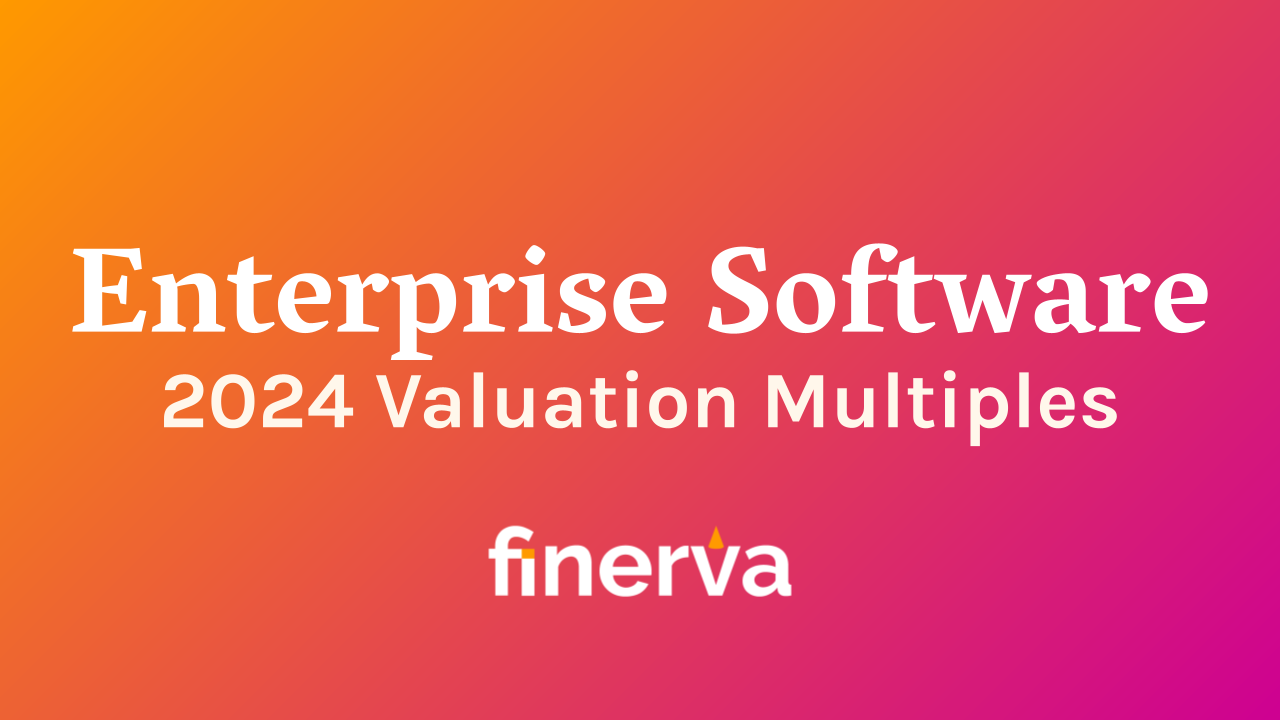Enterprise Software: 2024 Valuation Multiples

The Enterprise Software sector has been a hot topic in M&A for almost as long as software itself. The Covid pandemic, combined with a bullish stock market and an ever-so-digitised world gave it a huge boost with deal-flow nearly doubling between the pre- and post-pandemic eras. However, a less-than-ideal macroeconomic landscape, with global tensions, record inflation and capital becoming more and more expensive dealt the sector a significant blow throughout 2022.
However, per Hampleton Partners, the current outlook for M&A in this sector is looking healthy, with multi-billion megadeals replaced by mid-market transactions primarily led by strategic acquisitions focused on setting the stage for long-term digital transformation, rather than short-term cash-grabs. According to PwC it’s the Enterprise Software sub-sector that is keeping the larger software industry afloat in terms of M&A attractiveness.
Overall, M&A activity is still being led by large software conglomerates with tens, if not hundreds, of software companies under their umbrella. The list is topped by Valsoft in the US and Visma in Europe. With 21 acquisitions in the last two and a half years, 9 of which in 2022, Norway-based software company Visma—backed by PE firm Hg—is now one of Europe’s largest software companies after closing 7 deals only in the last quarter of 2023, reaching €2.3bn in Annualised Repeatable Revenue (ARR).
As reported by Hampleton Partners, last year saw a significant amount of intra-European consolidation—a trend seen across different verticals—with more than half of the deals targeting European companies (30% of total M&A targets) being acquired by a European entity.
In terms of sub-sectors, Enteprise Applications accounted for over a third of disclosed deals, while vertically focused applications that are specific to a single sector accounted for 25% of the total, with 229 deals in the first half of 2023 alone.
Vertically focused applications constituted the only subsector to see a significant M&A growth from 2022 to 2023, with Healthcare, Finance and Education collectively making up half of the individual verticals for industry-specialised software solution, among those companies which were the target of an acquisition.
Enterprise Software EBITDA & Revenue Valuation Multiples
30 month trailing Revenue multiples have been on an upward trend for the past 6 years, steadily growing from 3.5x in 2018 to upwards of 5x by the end of 2022.
In the first half of 2023, the median Revenue multiple for Enterprise Software companies was 5.1x.
EBITDA multiples have remained more constant over time, hovering between the 15x and 17x mark since 2018, although they have been on a downward trajectory for the last year and a half. In the first six months of 2023 the median EBITDA multiple for Enterprise Software companies was 15.3x.
The information available on this page is of a general nature and is not intended to provide specific advice to any individuals or entities. We work hard to ensure this information is accurate at the time of publishing, although there is no guarantee that such information is accurate at the time you read this. We recommend individuals and companies seek professional advice on their circumstances and matters.




